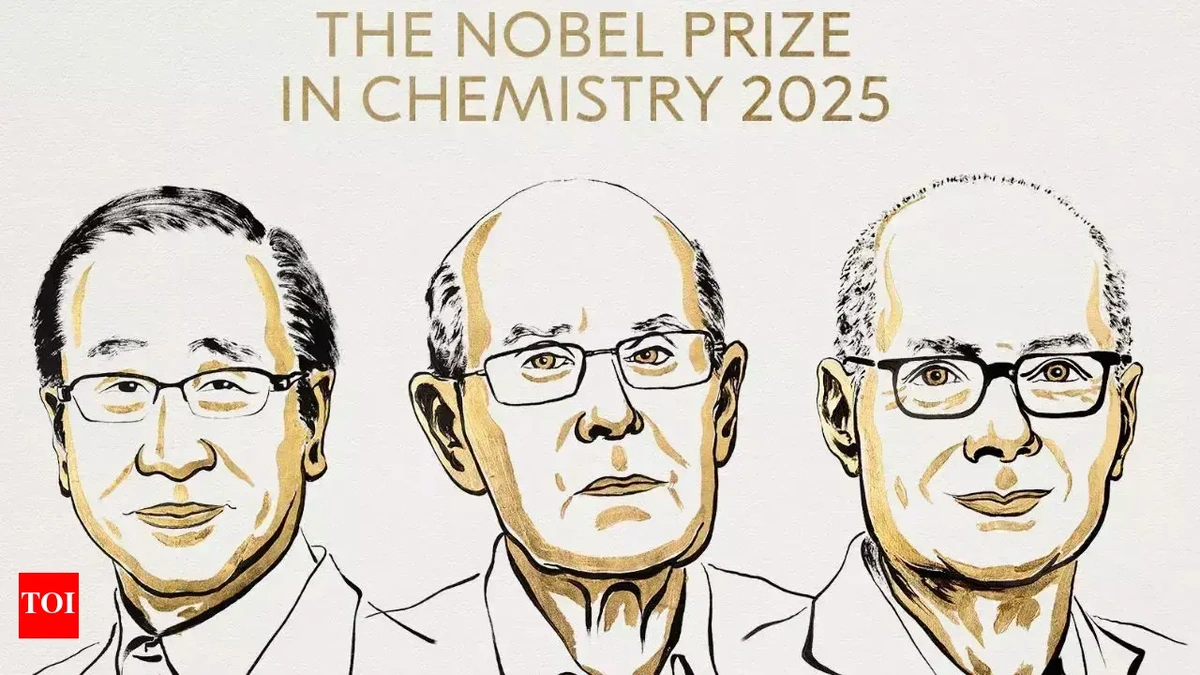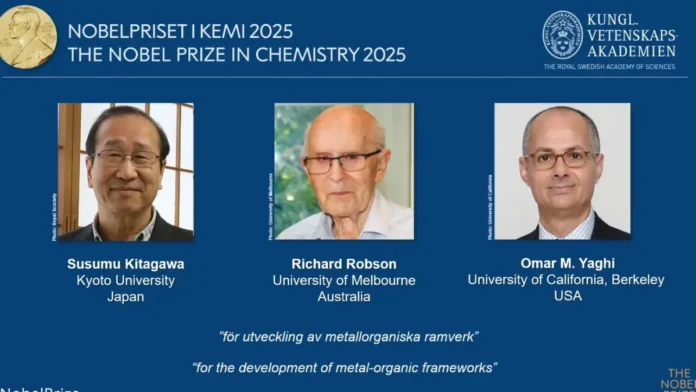Okay, so the Nobel Prize in Chemistry for 2025 has already been awarded? Seems like we’re jumping the gun a bit, right? But here’s the thing: predicting the future, especially in science, isn’t just wild guessing. It’s about spotting trends, recognizing brilliance, and understanding the potential impact of groundbreaking work. And trust me, the field of metal-organic frameworks (MOFs) is ripe for Nobel recognition.
So, let’s talk about why MOFs are such a big deal, and who might be on the short list to snag that prestigious Nobel Prize. Forget the crystal ball – we’re using scientific insight and a little bit of educated speculation.
What Exactly ARE Metal-Organic Frameworks, Anyway?

Before we start handing out awards, let’s get on the same page. Imagine a super-tiny, incredibly porous sponge made of metal ions connected by organic molecules. That, in a nutshell, is a MOF. These materials have an insane surface area – like, a teaspoon of MOF could have the surface area of a football field! And that’s precisely what makes them so exciting. MOFs are a type of porous materials .
But – and this is a big “but” – it’s not just about the surface area. It’s about the tunability. Scientists can tweak the metal ions and organic linkers to create MOFs with specific pore sizes and chemical properties. Need a material that selectively absorbs carbon dioxide? There’s a MOF for that. Want to catalyze a particular chemical reaction? Yep, MOFs can do that too.
Why MOFs Matter | Applications That Could Change the World
So, why all the Nobel buzz? Because MOFs aren’t just a cool lab curiosity – they have the potential to revolutionize a bunch of industries. And that’s what the Nobel is all about – rewarding discoveries that benefit humanity.
Here’s a taste of what MOFs can do:
- Carbon Capture: Imagine sucking carbon dioxide right out of the air. MOFs are being developed to selectively absorb CO2 from power plants and even directly from the atmosphere, helping to combat climate change. This is a prime example of sustainable chemistry in action.
- Hydrogen Storage: Hydrogen is a clean-burning fuel, but storing it safely and efficiently is a challenge. MOFs can act like tiny hydrogen tanks, packing a lot of gas into a small space.
- Catalysis: Many industrial chemical processes rely on expensive and sometimes toxic catalysts. MOFs can serve as highly efficient and environmentally friendly catalysts, speeding up reactions and reducing waste.
- Drug Delivery: Imagine delivering drugs directly to cancer cells, minimizing side effects. MOFs can encapsulate drugs and release them in a controlled manner at the desired location.
- Sensing: They can be used as sensors. MOFs can detect even tiny amounts of specific gases or chemicals.
Pretty impressive, right? And this is just the tip of the iceberg. The possibilities are truly endless.
The Frontrunners | Who Might Win the Nobel?
Alright, let’s get down to the fun part: predicting the winners. Now, I don’t have a direct line to the Nobel committee (I wish!), but based on the impact and influence of their work, here are a few scientists who are definitely in the running:
- Omar M. Yaghi: Widely considered one of the pioneers of MOF chemistry, Yaghi has made groundbreaking contributions to the design and synthesis of these materials. His work has laid the foundation for much of the research in the field.
- Makoto Fujita: Fujita is another giant in the field, known for his innovative approaches to creating complex supramolecular structures, including MOFs. His work has expanded the possibilities of what MOFs can do.
- Susumu Kitagawa: Kitagawa has made significant contributions to the development of porous coordination polymers (PCPs), a class of materials closely related to MOFs. His work has focused on the applications of these materials in gas storage and separation.
Of course, there are many other brilliant scientists working on MOFs, and the Nobel committee could always surprise us. But these three are definitely names to watch.
The Challenges Ahead
Now, let’s be real. Even with all the potential, there are still hurdles to overcome before MOFs become ubiquitous in our daily lives.
One big challenge is scalability. Synthesizing MOFs on a large scale can be tricky and expensive. Researchers are working on developing more efficient and cost-effective methods for MOF production. Another challenge is stability. Some MOFs are sensitive to moisture or air, which limits their applications. Scientists are designing more robust MOFs that can withstand harsh conditions.
But, the progress is rapid. And the potential rewards – a cleaner environment, more efficient energy storage, and new medical breakthroughs – are well worth the effort.
The Future is Porous | Why MOFs are Here to Stay
Here’s the thing: the design of MOFs isn’t just a fleeting trend. It represents a fundamental shift in how we think about materials. We’re moving away from simple, monolithic structures towards complex, tunable systems that can be tailored to specific needs. The work around MOFs has definitely helped shape the future of materials science .
And that’s why I’m so excited about MOFs. They’re not just a solution to today’s problems; they’re a platform for innovation tomorrow. Whether it’s capturing carbon dioxide, storing hydrogen, or delivering drugs, MOFs have the potential to transform our world in profound ways. And that, my friends, is definitely Nobel-worthy.
As per Wikipedia , MOFs are sometimes also called porous coordination networks.
FAQ About Metal-Organic Frameworks
What are some of the main advantages of using MOFs?
Their high surface area, tunable properties, and diverse applications make them incredibly versatile.
Are MOFs expensive to produce?
Currently, some MOFs can be costly, but research is ongoing to develop more cost-effective synthesis methods. The future for MOF synthesis is very bright.
Can MOFs help solve climate change?
Yes, MOFs show great promise in carbon capture and storage, which could significantly reduce greenhouse gas emissions.
Are MOFs safe to use in medical applications?
Extensive research is being conducted to ensure the safety and biocompatibility of MOFs for drug delivery and other medical uses.
Where can I learn more about MOFs?
You can explore scientific journals, university research websites, and reputable science news outlets for the latest advancements.
What are the recent advances in MOF research?
Recent advances include the development of more stable MOFs and their application in new areas such as water purification and sensing technologies.




